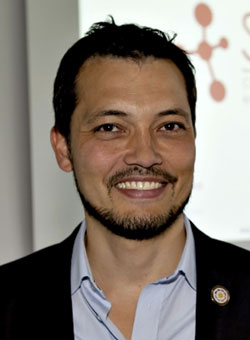Hy-Q Colloquium by Leif Katsuo Oxenløwe, Professor, The Technical University of Denmark
Energy-efficient optical solutions for the internet of the future
 Abstract: Communication technologies have profoundly changed our lives over the last twenty years. Since year 2000, the data traffic on the internet has increased a factor of x1000, and projections maintain large traffic growth rates. A widely deployed internet can lead to substantial greenhouse gas reductions and energy savings from e.g. smarter buildings. However, today the internet itself consumes about 9% of the world’s total electricity consumption, and that includes a high energy-efficiency improvement over time. However, progress in electronics is stalling with the demise of Moore’s law, and lately, the major energy-efficiency improvements have come from smarter constructions of hyperscale data centres, and not from the technology development.
Abstract: Communication technologies have profoundly changed our lives over the last twenty years. Since year 2000, the data traffic on the internet has increased a factor of x1000, and projections maintain large traffic growth rates. A widely deployed internet can lead to substantial greenhouse gas reductions and energy savings from e.g. smarter buildings. However, today the internet itself consumes about 9% of the world’s total electricity consumption, and that includes a high energy-efficiency improvement over time. However, progress in electronics is stalling with the demise of Moore’s law, and lately, the major energy-efficiency improvements have come from smarter constructions of hyperscale data centres, and not from the technology development.
Thus, we face the fundamental challenges of enabling massively more bandwidth to the benefit of the climate, yet with greatly reduced energy consumption, and we need new solutions to build an energy-efficient communication infrastructure for the future. Optics can play a key role in that endeavour.
Research Centre SPOC (Silicon Photonics for Optical Communications) explores optical routes to energy-efficient communications. The SPOC-team e.g. demonstrated that the light from a single chip could carry more than twice the worldwide internet traffic, for which the team won the EU Horizon 2020 Competition Prize for “Breaking the Optical Transmission Barrier.”
This talk, will describe some of the approaches used in SPOC, such as nonlinear optical chips as light sources, as optical signal processors, as single-photon sources, in order to handle extreme data rates, energy-efficient communication systems and quantum key distribution systems.
